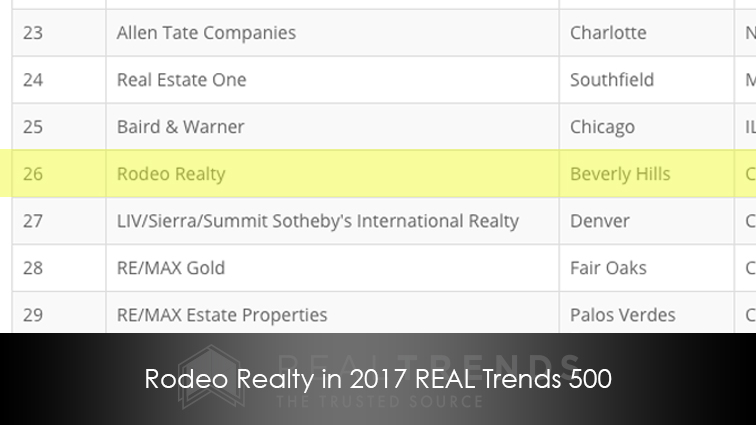Stocks markets end March almost unchanged from February – Stocks soared to new heights early in the month. At one point the DOW broke 21,000. Unfortunately for investors, stocks retreated from all time highs early in the month. The Dow Jones Industrial Average on March 31, 2017 was 20,663.22, down from its February 28 close of 20,837.44. The S&P 500 closed the month at 2,362.72 almost unchanged from its February close of 2,369.73. The NASDAQ closed the month at 5,911.74, up from last month’s close of 5,861.90.
Treasury Bond yields end month slightly lower – Despite a rate rise by the Federal Reserve, treasury bonds fell slightly in March. The 10-year Treasury bond closed March 31, 2017 at 2.40%, down from 2.46% at the end of February. The 30-year treasury yield ended the month at 3.02%, down slightly from 3.06% last month.
Mortgage Rates almost unchanged in March – The March 30, 2016 Freddie Mac Primary Mortgage Survey reported that the 30 year fixed mortgage rate average was 4.14%, just slightly higher than 4.10% on March 4, 2017. The 15 year fixed was 3.39% up slightly from last month’s close of 3.32%. The 5-year ARM was 3.18%, slightly higher than 3.14% on March 4.
Consumer Confidence at 15 year high – The government reported that consumer confidence in February climbed to the highest level in 15 years. The Monthly Consumer Confidence Survey had the Consumer Confidence Index at the highest level since July 2001.
Federal Reserve raises benchmark rates – The Federal Reserve announced Thursday that they had increased their benchmark interest rates. The 1/4% increase was the second increase in less than 90 days, but just the third increase in a decade. The Federal Funds and Discount Rate, the rate which the Fed charges banks for overnight lending now stands at about 1%. It had dropped to 0 – 1/4% during the recession and stayed at that level until December 2015 when the Fed rose the rate by 1/4%. The economy showed signs of slowing in the first two quarters of 2016, so rate hikes were put on hold. The next increase didn’t happen until December 2016, and the third increase was March 16, 2017. The Fed still expects 2 more increases this year, and stated that the policy still is “accommodative”, and “neutral” would have a rate near 3%. Following the increase banks increased their prime rates by 1/4%, which increased all loans tied to prime like home equity lines of credit, and most business loans. Some banks increased rates paid out to on bank accounts, which will increase adjustable rate mortgages, as those are tied to bank’s cost of funds. The 15, and 30 year fixed actually dropped after the announcement. They had increased over the last two weeks. Higher rates generally mean less inflation. Interest rates fixed for long periods need to be at a higher rate than inflation which they call “the spread” to make a profit. To put is simply, the Fed uses interest rate policy to help the economy when slow by lowering rates. Lower rates make borrowing less expensive to encourage people and companies to borrow more to increase investing. When the economy is so strong that inflation is a risk the Fed increases rates to slow the economy so it doesn’t overheat. Technically that’s not exactly what has happened. What they have done is raise rates and will continue to raise rates to a “neutral rate”, as they dropped rates to the lowest level in history, because the recession was so deep. Now that job growth has been so strong, and we are seeing signs of inflation they don’t feel that historically low rates are needed and are gradually trying to get them to a more neutral level. Without getting rates up they don’t have the valuable tool to drop them if the economy slows, as you can’t go down from zero!
California jobless rate dips to 5% in February, a 10 year low – The Employment Development Department reported that California’s unemployment rate dropped to 5% in February, a 10 year low. 22,900 net new jobs were added in February. Over the last 12 months 315,800 new jobs were added in California, a 1.9% increase. California’s increase in new jobs created outpaced the national job increase pace of 1.6%. The unemployment rate in L.A. County was 4.8%.
California home sales pace, and prices continue to rise – The number of existing homes sold in California increased 4.7% month over month from January. Year over year the number of homes sold were up 4.9% from February 2017. The median price paid for a home in California was 478,790. The median price represents the point at which 1/2 the homes sell for more, and 1/2 sell for less. Month over month the median actually dropped which we have often seen over the last year, as one month is not a large sample. Month over month the median dropped 2.2% from January. Year over year, which is a better indicator of price movement prices were up up 7.6 in February from February 2016. Inventory increased to a 4 month supply as more homeowners began putting homes on the market. That was up from 3.7 months in January, but down from 4.7 months last February. Inventory levels are also better to compare year over year due to seasonal purposes.
Low inventory leads to a decline in pending sales of existing homes – The California Association of Realtors reported that new contracts signed for the purchase of existing homes in February declined 2.6% year over year from the number of contracts last February. Month over month pending sales increases 3.2% from January’s pending contract level. It’s best to compare year over year rather than month over month due to seasonal reasons. Pending home sales is an indicator of future closed sales.
U.S. Existing home sales dip from January’s 10 year high pace – prices increase – According to the National Association of Realtors, U.S. Existing home sales dipped 3.7% in February from January’s pace. January marked the highest number of sales in January in almost a decade. Year over year existing home sales were up 5.4% from last February. The median price paid for a home nationally was 7.7% higher in February than it was one year ago. This marked the 60th consecutive month of year over year price gains.
U.S. Pending home sales surged in February – Pending re-sale home sales increased 5.5% in February from January’s pace, according to data released by The National Association of Realtors. Year over year pending sales were 2.6% above last February’s pace. February’s sales pace was the highest in 11 months.
U.S. new home sales surge in February – The Commerce Department reported that new home sales rose 6.1% in February from January’s sales pace levels. Year over year new home sales increased a staggering 13% from last February, 2016. The National Association of home Builders / Wells Fargo builder sentiment index rose to its highest reading since June 2005.
Have a great weekend,
Syd







